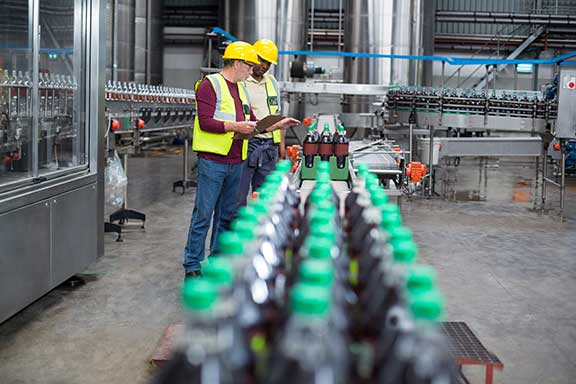
February 4, 2019
By Pete Butler, CEO, MS Companies
Artificial intelligence, robotics and the internet of things are transforming the workplace and empowering epidemic change in the manufacturing industry. While many felt these innovations would eliminate jobs, experts have found that more positions are being created – job openings have grown by double-digits since 2017. According to Deloitte and The Manufacturing Institute, coming years will introduce an increasingly widened gap between jobs that need to be filled and skilled employees capable of stepping in. To address this inadequacy, employers should integrate training and educational opportunities with technological innovations to expand skill sets for placement of qualified labor now and into the future.
The skills gap may leave a projected 2.4 million positions vacant in the next decade, with a potential economic impact of 2.5 trillion. Furthermore, positions involving digital talent, skilled production and operational management may be three times as problematic to fill in the next few years.
How can the manufacturing industry prepare for this change and fill positions with the most qualified individuals? What strategies can be used for training and ongoing education to enable the necessary skills? The answer lies within the complex subject matter at hand.
Predictive analytics and machine-learning are used for a wide range of business processes today, so why not deploy this innovative technology for efficient employee recruitment and placement in the manufacturing industry? These processes can eliminate the guesswork in finding the best, most qualified individual for the job, and do so in a timely manner. This notion, coupled with the capability of the gig economy, can save industry manufacturers and suppliers valuable energy and resources and ultimately increase profitability.
For context, the gig economy is built on utilizing a temporary workforce for short-term engagements, a concept that can be applied and scaled to meet the needs of most businesses today – whether B2B or B2C. This poses a considerable advantage to manufacturers who often require talent that can fulfill tasks on-demand.
Recent studies show more than one-third (36 percent) of U.S. employees are gig workers, which amounts to nearly 57 million Americans. By 2020, freelancers or independent contractors will comprise 50 percent of the U.S. workforce at some capacity. This growth can be attributed to the high cost of health care and other benefits for full-time employees, constant fluctuation in demand for products and services and increased overhead costs.
Manufacturers and top-tier suppliers are no stranger to these issues, making them strong candidates for leveraging gig economy principles to effectively and efficiently fill workforce gaps. Operations and workforce management can be streamlined through the following avenues:
Manufacturers that capitalize on the power of the gig economy, paired with innovative predictive analytics and engaging mobile platforms, will be well positioned to improve productivity, better meet customer demand and increase earnings. In today’s increasingly competitive and complex workforce landscape, the gig economy provides manufacturers and suppliers with a scalable solution to combat the workforce shortage and propel their businesses.
 About the Author:
About the Author:
Pete Butler is chief executive officer and founder of MS Companies, a data-driven technology company providing manufacturers and suppliers with unparalleled efficiency and agility in both workforce and operational quality objectives. He sets the strategic direction and drives customer-centric innovation and growth. Pete is an accomplished entrepreneurial business executive with more than 25 years of experience strengthening and developing existing business models and state-of-the-art new business ventures. He brings a hands-on approach to the business process through strong leadership, communication, creative and analytical skills.
Scott Ellyson, CEO of East West Manufacturing, brings decades of global manufacturing and supply chain leadership to the conversation. In this episode, he shares practical insights on scaling operations, navigating complexity, and building resilient manufacturing networks in an increasingly connected world.